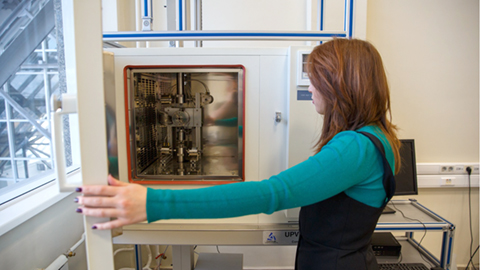Scientists Develop Method to Reduce Carbon Footprint of Coal-Fired Thermal Power Plants
Scientists of Siberian Federal University have proposed a way to improve the technology of coal processing at thermal power plants (TPP). By combining a combined-cycle gas turbine unit with in-cycle gasification and the technology of in-line coal gasification in a CO2-H2O-O2 environment, the researchers have developed a numerical methodology for mathematical three-dimensional modeling of coal gasification processes. The results obtained by the Siberian scientists can be used to design new power plants that will be more environmentally friendly and will help achieve carbon neutrality by the middle of the 21st century.
Modern experimental and theoretical research aimed at modernizing the energy industry in order to make it more environmentally friendly is highly relevant and in demand. Currently, the energy industry in most regions of Russia is based on coal processing. Traditional methods of generating electricity from this material lead to a large number of harmful emissions into the environment. However, there are already highly environmentally friendly methods of burning coal, for example, the technology of combined cycle gas plants with in-cycle gasification (CCGT or integrated gasification combined cycle, IGCC).
SibFU scientists proposed combining this relatively new technology with another green development in the field of energy — flow gasification of coal in the environment of CO2-H2O-O2. As a result of such fuel processing, it is easier to capture carbon dioxide, since the flue gases in this case consist of a mixture of CO2 and H2O (without nitrogen). By capturing and disposing of a large volume of carbon dioxide, it is possible to significantly reduce the carbon footprint in the energy sector.
“When gasifying coal fuel in a CO2-H2O-O2 environment, it is very difficult to choose the operating mode of the installation. Sustained ignition and high conversion efficiency depend on many factors. We conducted a systematic numerical study of the dependence of the physico-chemical processes of in-line coal gasification in a CO2-H2O-O2 medium on such important regime parameters as the oxygen excess coefficient, oxygen concentration in the blast and the amount of steam supplied,”said Viktor Kuznetsov, co-author of the study, senior researcher at the Laboratory of Low-carbon Metallurgy and Energy at SibFU.
Scientists have developed a numerical method for mathematical three-dimensional modeling of the coal gasification processes under consideration. Using the proposed technique, the processes of oxygen gasification were investigated: the dependence of the synthesis gas composition, chemical efficiency, mechanical underburning, ignition stability and gasification on the parameters of the blast supply was established.
“For the successful implementation of IGCC technology, it is necessary to develop strategies for optimal management of these parameters. This will make it possible to achieve a stable and efficient coal gasification process, which in turn will lead to an increase in energy efficiency and reduce the negative impact on the environment. Such research will contribute to the development and improvement of IGCC technology, which is an important area in the field of energy and ecology,”added Daria Bozheeva, research engineer at the Laboratory of Low—carbon Metallurgy and Energy at SibFU.
According to experts, the results obtained will be useful to research engineers conducting research and development work on the design of new power plants.
“New methods of coal processing, such as the technology of combined cycle gas plants with in-cycle gasification, may replace traditional boilers at thermal power plants in the future. It is too early to talk about the timing when this will happen: a comprehensive modernization of equipment is required, large capacity — this will lead to a high cost of structures. Currently, CCGT technologies are in the development stage in Russia, but in the foreseeable future, as they are implemented, they will be able to reduce harmful emissions from coal-fired thermal power plants, including reducing the carbon footprint,”the SibFU scientists summarized.


